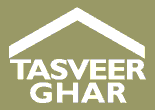
Collecting, archiving or studying various forms of popular art and culture in South Asia has been a passion of each one of us involved in this project in our individual capacities, looking along the way for better resources or institutional support to maintain our personal collections. The idea, however, to start a network of these collections and to preserve them in digital format came up during an international workshop at Heidelberg in 2006.
Archiving the visible and visualisation in South Asia
Building a scientific database for visual and audiovisual media
This international workshop - organized by the Department of Anthropology at the South Asia Institute, in collaboration with Sumathi Ramaswamy (then at the University of Michigan) was held in Heidelberg from May 22-24, 2006. Funded by Heidelberg's interdisciplinary and collaborative research centre ''Ritual Dynamics'' (SFB 619), this event took as its central mission the twin goals of re-conceptualizing current archiving and displaying practices in light of debates around the visual turn (especially in South Asian studies), and vice versa, asking how the field of visual studies is itself reconfigured by our archiving practices. One of the key agendas in this workshop was to explore means and ways for the construction and use of a digital database in order to treat, think with, and talk about image, text, and ritual/ised practice in a new fashion.
The outcome was the constructive assemblage of ideas for setting up a transnational virtual network and digital home for visual culture for modern South Asia (with some considerations of ties to Southeast Asia and China). Our idea for such a digital home emerged from our recognition that the preservation and systematic engagement with popular visual culture in South Asia has so far been rather marginal, and yet its potential for cross-disciplinary scholarship and advancing trans-national collaborations is far-reaching. In particular, we became interested in assembling and launching a virtual electronic archive—with open public access to scholars, students, and other interested professionals across the world— that would collect, document, contextualise, and digitise, and hence preserve for posterity, a wide variety of mass-produced images and visual objects such as historical photographs, bazaar prints, film posters and hoardings, religious ephemera, political paraphernalia, and commercial advertisements, to mention a few 'genres' among many.
• the social and performative life of images (e.g. as they emerge in and out of ritual practices)
• the histories and everyday lives and voices of producers, disseminators and 'consumers' (e.g. ritual specialists, laymen, etc.)
• various techniques of visuality/media of visualisation (for instance, ritual or theatrical performance, and political spectacle)
• collecting and exhibiting practices, the growth of private and public repositories for visual materials.
Among the international participants were Jyotindra Jain, Yousuf Saeed, Shuddhabrata Sengupta, Patricia Uberoi (all from New Delhi), Patsy Spyer and Roos Gerritsen (Leiden), Willem van Schendel (Amsterdam), and Kajri Jain (Toronto).
Additionally, scholars from Germany brought to our discussions their expertise from fields such as anthropology, history, visual studies, database management, film making, art, art collecting and museum curating.
Christiane Brosius
Heidelberg, 2006
 Tasveer Ghar: A Digital Archive of South Asian Popular Visual Culture
Tasveer Ghar: A Digital Archive of South Asian Popular Visual Culture